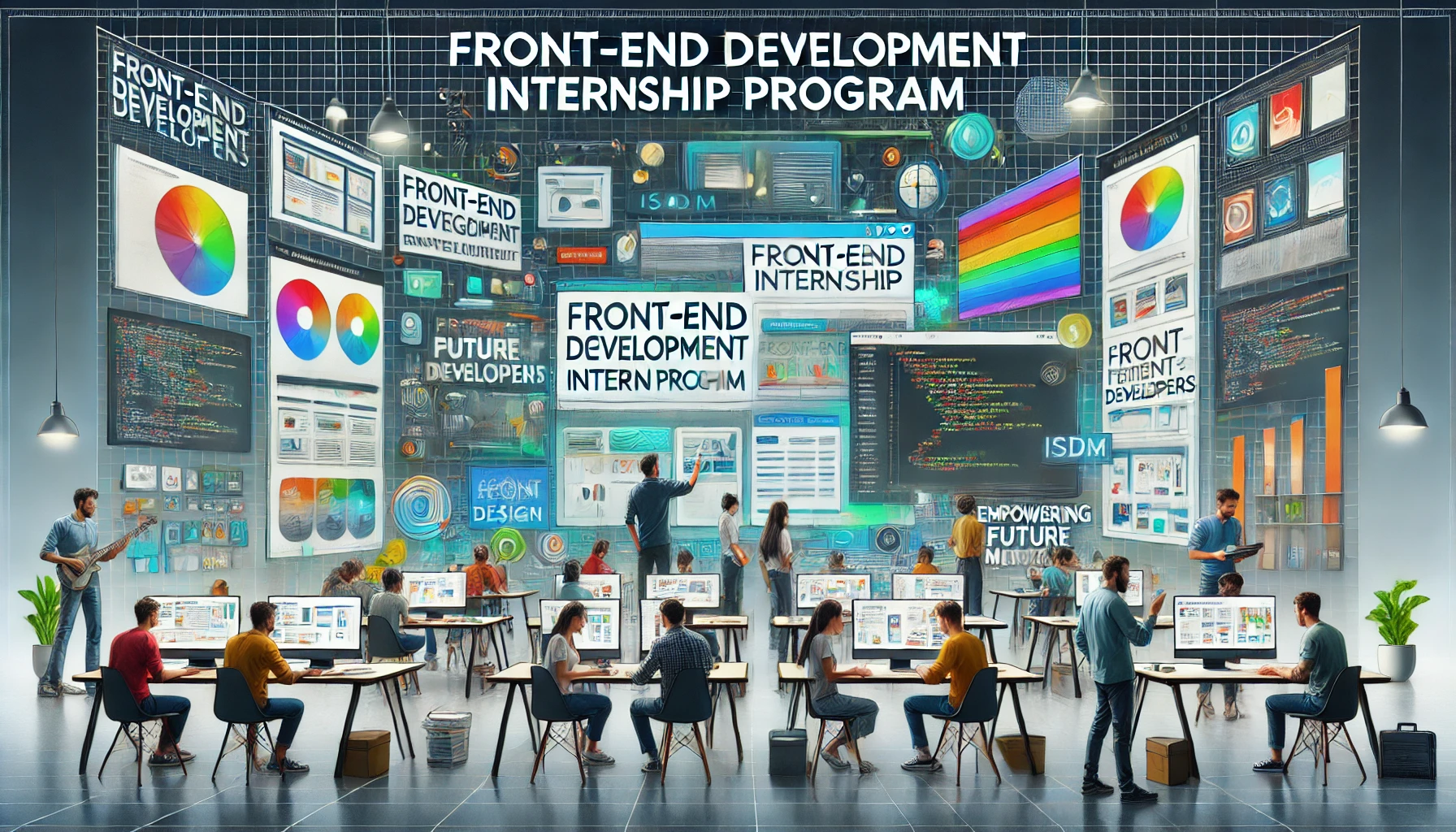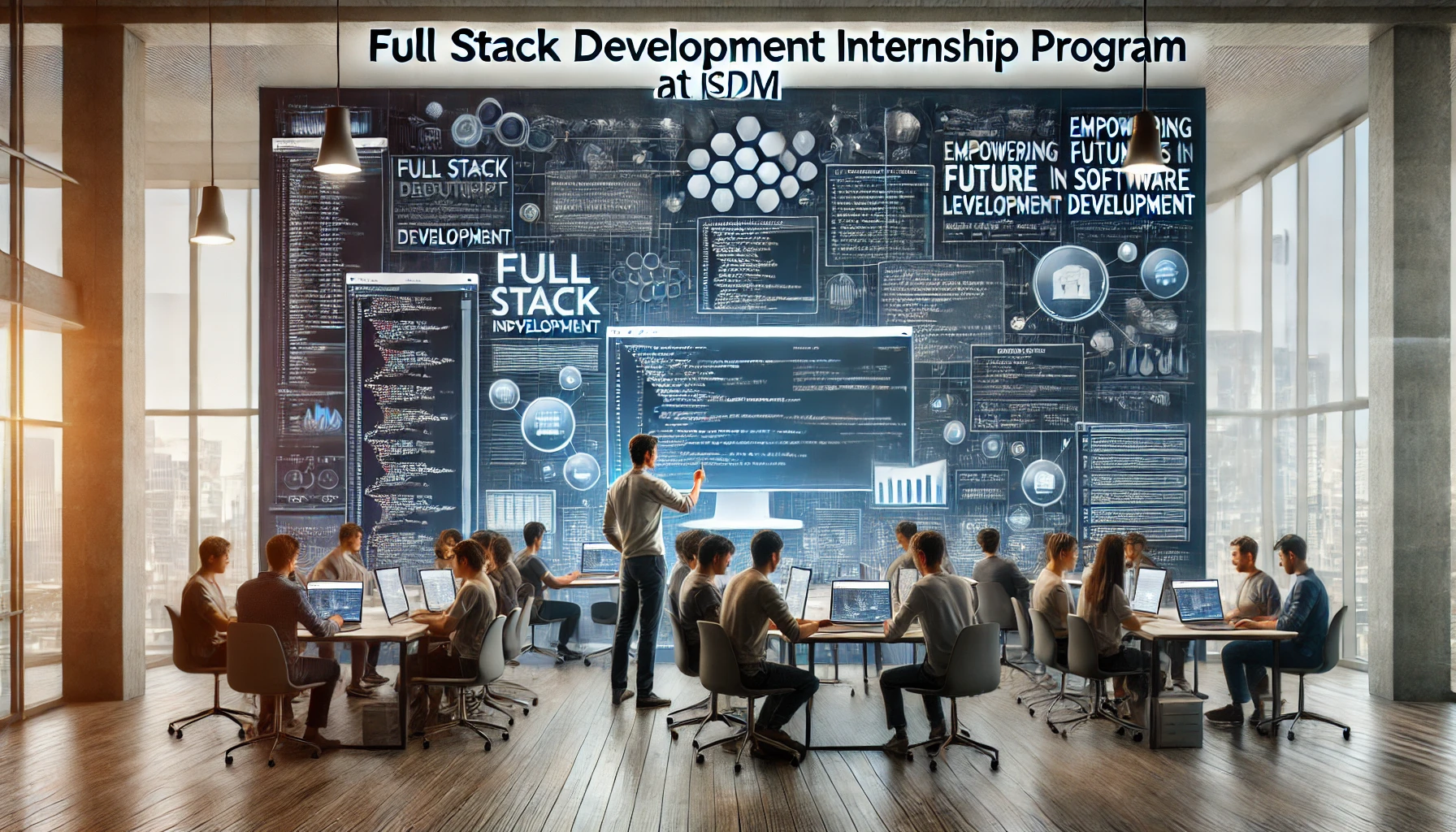The Web Development Internship Program is designed to equip students with hands-on experience in building dynamic and responsive websites. This internship focuses on both front-end and back-end technologies, providing participants with a comprehensive understanding of modern web development practices. Throughout the program, students will engage in practical sessions, work on live projects, and develop a fully functional web application by the end of the course.
This program includes:
- Practical Sessions: Hands-on coding exercises and real-world problem-solving.
- Live Projects: Work on real-time projects to apply learned skills and gain practical experience.
- Certificate: A completion certificate to showcase your web development skills and achievements.
- Internship Report: A comprehensive report documenting your work, learnings, and project contributions during the internship.

Web Development Internship Program with day-wise modules designed to give a holistic understanding of modern web development practices:
Week 1: Foundations of Web Development
Day 1: Program Orientation & Introduction to Web Development
- Overview of web development (front-end and back-end)
- Introduction to web technologies (HTML, CSS, JavaScript)
- Setting up the development environment (text editors, version control, browsers)
Day 2: HTML Basics
- Introduction to HTML5 and its structure
- Creating elements (headings, paragraphs, links, images, forms)
- Semantic HTML and best practices
- Practical exercise: Build a basic HTML webpage
Day 3: CSS Fundamentals
- Introduction to CSS3 and its role in styling web pages
- Understanding the box model, padding, margin, borders
- Styling elements, typography, colors, and layout
- Practical exercise: Style the HTML page created on Day 2
Day 4: Responsive Web Design
- Importance of responsive design in web development
- Media queries, breakpoints, and flexible layouts
- Introduction to CSS Flexbox and Grid for responsive layouts
- Practical exercise: Make a webpage responsive for different screen sizes
Day 5: Version Control with Git and GitHub
- Introduction to Git for version control
- Git commands (commit, push, pull, branching, merging)
- Setting up and using GitHub for collaboration
- Practical exercise: Set up a GitHub repository and push a web project
Week 2: JavaScript and Client-Side Development
Day 6: JavaScript Basics
- Introduction to JavaScript: variables, data types, loops, and functions
- DOM (Document Object Model) manipulation
- Adding interactivity with event listeners
- Practical exercise: Add interactive features to a webpage (e.g., button click event)
Day 7: Advanced JavaScript Concepts
- Understanding functions, arrays, and objects
- ES6 features: arrow functions, template literals, destructuring
- Introduction to asynchronous programming (callbacks, promises, async/await)
- Practical exercise: Use JavaScript to fetch data from a simple API
Day 8: JavaScript and the DOM
- Manipulating the DOM using JavaScript (creating, updating, deleting elements)
- Dynamic content rendering based on user input
- Practical exercise: Build a dynamic to-do list using JavaScript and DOM manipulation
Day 9: JavaScript Libraries and Frameworks (jQuery Basics)
- Introduction to jQuery and simplifying DOM manipulation
- Using jQuery for event handling and animations
- Practical exercise: Rebuild a dynamic form using jQuery
Day 10: Introduction to Front-End Frameworks (Bootstrap)
- Understanding the role of front-end frameworks in web development
- Introduction to Bootstrap for faster web design
- Using Bootstrap components (navbar, forms, buttons, modals)
- Practical exercise: Build a responsive webpage using Bootstrap
Week 3: Advanced Front-End Development
Day 11: CSS Preprocessors (SASS/SCSS)
- Introduction to SASS/SCSS for enhanced styling
- Variables, nesting, and mixins in SASS
- Setting up a project with SASS and compiling SCSS into CSS
- Practical exercise: Refactor a project to use SASS for better styling structure
Day 12: JavaScript Frameworks: Introduction to React.js
- Understanding the basics of React and component-based architecture
- JSX syntax and virtual DOM
- Setting up a basic React project using Create React App (CRA)
- Practical exercise: Build a simple web app using React components
Day 13: State Management in React
- Introduction to React state and props
- Managing component state and passing props between components
- Practical exercise: Build a React app with multiple components and state management
Day 14: Routing and Navigation in Web Applications
- Introduction to client-side routing using React Router
- Creating routes and linking components
- Practical exercise: Build a multi-page React app with routing
Day 15: Front-End Build Tools (Webpack & Babel)
- Introduction to Webpack for module bundling and Babel for JavaScript transpiling
- Setting up a basic build process for modern JavaScript development
- Practical exercise: Set up a project using Webpack and Babel for better performance and browser compatibility
Week 4: Back-End Development and Databases
Day 16: Introduction to Back-End Development (Node.js & Express.js)
- Introduction to server-side development with Node.js
- Setting up a basic Express server
- Understanding request-response cycles in web applications
- Practical exercise: Build a basic REST API with Express.js
Day 17: Databases: Introduction to SQL and NoSQL
- Understanding relational databases (SQL) and non-relational databases (NoSQL)
- Introduction to MySQL/PostgreSQL and MongoDB
- Practical exercise: Set up a database and perform CRUD operations
Day 18: Connecting Back-End with Front-End
- Making HTTP requests from front-end (using Fetch or Axios)
- Integrating front-end and back-end (React with Node.js)
- Practical exercise: Build a full-stack app with a simple front-end interface connected to a back-end server
Day 19: Authentication and Security in Web Applications
- Understanding user authentication (sessions, cookies, JWT)
- Implementing basic login and signup functionality
- Practical exercise: Create a login system using Node.js and Express with JWT for authentication
Day 20: Introduction to APIs and RESTful Services
- Overview of RESTful services and APIs
- Building and consuming APIs in web applications
- Practical exercise: Build a REST API with Express and consume it from a front-end React app
Week 5: Advanced Back-End and Full Stack Development
Day 21: Advanced Node.js Concepts (Middleware, Error Handling)
- Introduction to middleware in Express.js
- Error handling techniques in back-end applications
- Practical exercise: Add middleware and error handling to an existing Node.js project
Day 22: Deployment of Web Applications
- Introduction to web hosting and deployment platforms (Heroku, Netlify)
- Deploying static sites and full-stack applications
- Practical exercise: Deploy a full-stack project to Heroku or Netlify
Day 23: Working with APIs: Fetching Data from External Services
- Fetching data from external APIs (e.g., weather API, news API)
- Displaying data dynamically in front-end applications
- Practical exercise: Integrate an external API into a web project and display the data
Day 24: Building and Integrating Real-Time Features
- Introduction to WebSockets for real-time communication
- Implementing real-time features like chat or notifications
- Practical exercise: Build a simple real-time chat application using WebSockets
Day 25: Web Performance Optimization
- Techniques for optimizing website performance (lazy loading, image compression, caching)
- Analyzing website performance using tools like Lighthouse
- Practical exercise: Optimize the performance of an existing project
Week 6: Final Project and Wrap-Up
Day 26: Project Work – Full Stack Web Application (Part 1)
- Plan and start building a full-stack web application
- Define project scope, features, and architecture (front-end, back-end, database)
- Begin front-end development of the project
Day 27: Project Work – Full Stack Web Application (Part 2)
- Continue working on the front-end (React components, styling)
- Start back-end development (Node.js API, database integration)
- Connect the front-end and back-end components
Day 28: Project Work – Full Stack Web Application (Part 3)
- Complete the core features of the application
- Implement authentication, error handling, and real-time features if applicable
- Test and debug the entire application
Day 29: Project Presentation and Peer Review
- Present the final web application to peers or mentors
- Peer review sessions to receive feedback and suggestions for improvement
Day 30: Internship Wrap-Up and Reflection
- Reflect on the learning experience and key takeaways from the internship
- Discussion on career opportunities in web development
- Final program feedback and certificate distribution
This 30-day Web Development Internship program provides a comprehensive approach to mastering web development, covering both front-end and back-end technologies, project-based learning, and real-world application development.












